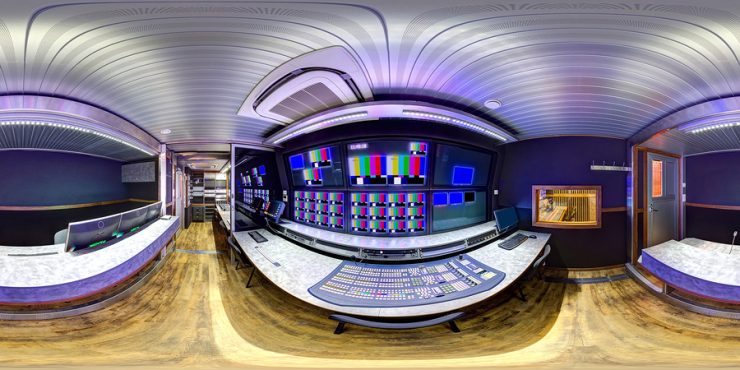We have been hearing about the advent of Immersive Technologies like Virtual Reality and Augmented Reality in a variety of fields for a long time. The entertainment industry has greatly embraced Virtual Reality with platforms like Steam providing gaming experiences to millions of people. Augmented Reality based games like Pokemon Go or Harry Potter Wizards Unite are also getting a lot of attention. Meanwhile, other fields like industry and education are following closely with immersive technology applications that increase task efficiency in a wide variety of situations.
In this article, I would like to talk about 360 Video, a less known Immersive Technology that provides us with very interesting capabilities especially for Learning. A 360 Video is a digital resource that allows you to feel you are in the center of the action. It should ideally be experienced with Virtual Reality glasses, but you can also experience it through regular video platforms like YouTube in a less immersive way. We don’t need an expensive pair of virtual reality glasses to experience 360 Video. Cardboard glasses and a regular smartphone as the starting point provide a very decent experience.
360 Video has been used a lot in documentaries, tourism and real estate to construct narratives which virtually take you to contexts or places different from your physical one. And this is done with a high realism degree (360 degrees, 8K resolution, 3D, 60 FPS and positioned 360 sound) as opposed to experiences where you don’t use 360 video but a digital construct with video game aesthetics. Add to that cocktail the ability to interact with the 360 video. The ability of going from a passive spectator to being an active and central player in the story to the point that the choices you make inside the experience totally determine its plot and flow. You can think of it as the video version of “Choose your own adventure” books.
Take then Interactive 360 Video and bring it to education. Let’s use a soft skills training example, in particular communication and feedback. Imagine an Interactive 360 Video learning resource that, once you put your virtual glasses on, makes you play the role of an employee who has been called by his manager to a meeting. You find yourself in an office, your manager walks in and explains a difficult situation to you that has been created in your workplace. We have a challenge. Then, he asks you to make a decision in order to resolve this situation. You get a bunch of options, choose one and your manager reacts according to the chosen answer. The experience goes on with a combination of the elements we have introduced and the ability to choose, for example, among different managers, each one representing a different communicative style.
What are you getting with such an experience from a learning perspective? First of all, you are immersed in a very realistic simulation which increases knowledge retention. You get to accumulate “flying hours” of almost real experience since you can design a wide variety of situations according to what the learner is going to find in real life. This constitutes a highly attractive format which has an impact on the degree to which you are engaged and motivated in your learning. You get a safe realistic simulated learning environment in which you can fail with no fear of real consequences. You play an active role in the experience getting the benefits of active learning. You can promote empathy, making the user play the role of a person he/she will deal with. You get to test and compare different options on the learning topics at your own pace. Being able to go one way, go back, choose another path and compare the consequences of each. You have a powerful simulation tool that can be used very easily reducing the hassle of traditional simulations.
To sum up, from the learning perspective, Interactive 360 Video provides a wonderful learning resource to easily provide learners with very realistic and interactive simulations. Companies like Walmart, Kentucky Fried Chicken or Linde have already found that using Interactive 360 Video makes their employees not only learn better and faster but also to be more engaged and motivated in their learning.

This article was written by Luis Villarejo Muñoz, co-founder and CEO of Immersium Studio which is a spin-off from UOC in Barcelona, Spain. Visit the Immersium Studio site to get an idea of some of the highly innovative projects in which Luis and his team are working.
Immersium have just been awarded the 2019 Immersive Learning Research Network best immersive learning app for their Interactive 360 Video experience on Soft Skills training















